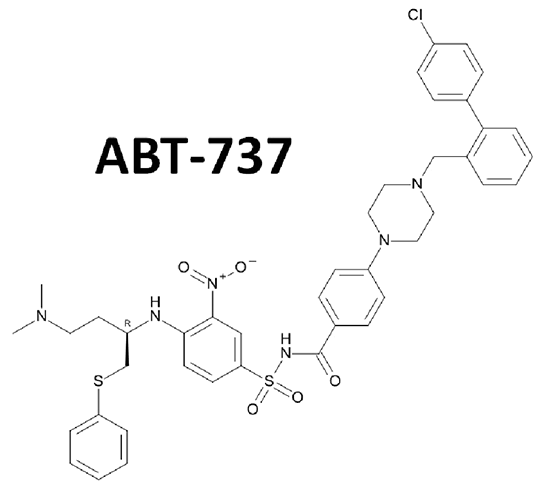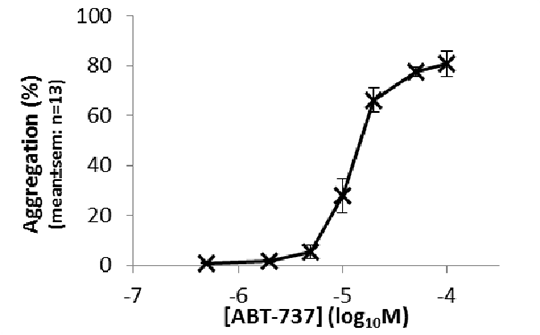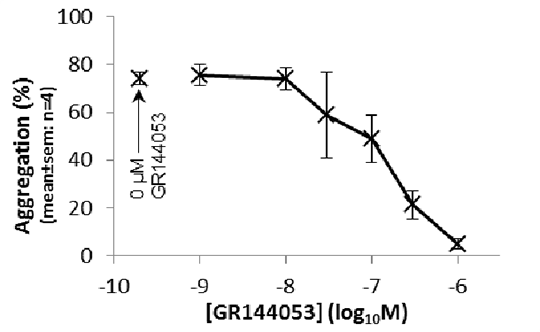Investigation of the Effect of ABT-737 on Platelet Aggregation BH3 (Bcl-2 homology domain 3)-mimetic drugs (e.g. ABT-737 and navitoclax) are a novel and promising class of anti-cancer drugs (1). However, their use is limited by dose-dependent thrombocytopenia, thought primarily to be due to platelet apoptosis. The aim of this study was to determine whether ABT-737 could directly induce platelet aggregation.
Aggregation was measured using light-transmission aggregometry, as previously described (2). Washed platelets from human volunteers (Cambridge Human Biology Research Ethics Committee, Ref: 2012.08) were stimulated with ABT-737 (control & 0.5 – 100µM; dissolved in DMSO to a final concentration of 0.5%). The effect of the GPIIbIIIa antagonist GR144053 on the response induced by 20 µM ABT-737 was also determined. The change in optical density after 6 min (final extent) induced by ABT-737, thrombin and U46619 (a thromboxane analogue) was measured. Concentration-response data were fitted to a four parameter logistic equation to determine the maximum response and pA50 (or pIC50) values as previously described (2). Parameters were compared using one-way ANOVA. There was no significant difference between the maximum final extent of the response induced by ABT-737 (79.5±1.7%), thrombin (84.3±0.3%) and U46619 (78.0±5.3%) (P=0.46). The pA50 for the final extent of the platelet response induced by ABT-737 was 4.94±0.06 (Fig. 1). The response induced by 20 µM ABT-737 was fully inhibited by GR144053 with a pIC50 of 6.95±0.21 (Fig. 2). This was similar to its potency at inhibiting U46619-induced aggregation.
Figure 1
Figure 2 In conclusion, the quantitative similarities between the responses to ABT-737 and other conventional platelet agonists, together with the inhibitory effect of GR144053 strongly indicate that ABT-737 directly induces a GPIIbIIIa-dependent platelet aggregation response. The capacity of ABT-737 to induce platelet aggregation in vitro raises the possibility that this mechanism may contribute to ABT-737-induced thrombocytopenia in vivo. (1) Roberts AW et al. (2012). J Clin Oncology 30: 488-96 (2) Jarvis GE et al. (2000). Br J Pharmacol 129: 275-82
|




